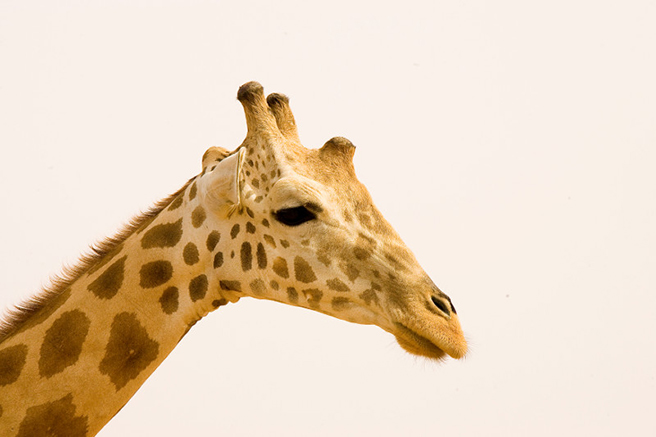AWF Finds Ways for Humans, Giraffes to Coexist in Niger

The West African giraffe has an estimated total population of only 403 individuals. This endangered giraffe subspecies is solely found in Niger, in an area of approximately 84,000 hectares.
The West African giraffe lives outside of protected areas, mainly on community lands and farms. This coexistence with humans is not without consequence for the giraffes—given that communities are primarily engaged in agriculture, extensive livestock herding and charcoal burning, giraffe habitat is being degraded and reduced. In addition, the area is dry and suffers from the effects of climate change and land-use change. The giraffes therefore frequently feed on farmers’ crops for survival, leading to human–giraffe conflict.
To address this issue, AWF, together with its government and non-governmental partners—namely Direction de la Faune et de la Chasse (or DFC), Association pour la Valorisation de l’Ecoturisme au Niger (or AVN) and l’Association pour la Sau- vegarde des Girafes du Niger (or ASGN)—began working with affected communities in 2012. The partners have implemented a number of activities to mitigate human–giraffe conflict, including sensitisation meetings at each of the eight local villages, where AWF provided technical information on how to avoid conflict with giraffes; the identification and mapping of conflict areas; and the formation of conflict-resolution committees, which include representatives from the communities and the local administration.
Based on these actions, the need to secure and conserve giraffe habitat was confirmed as one of the key strategies to ensure effective reduction of conflict. AWF and its partners therefore led a giraffe habitat restoration exercise in 2012 and 2013, working with two villages to plant approximately 5,300 acacia trees in an 11-hectare space. The organisations also established a Zone de mise en defens, a 20-hectare, non-degraded area identified by community as an area where they would avoid human activities such us cutting trees and growing crops.
The mitigation plan for human– giraffe conflict still needs to be completed, but AWF with the support of its partners has taken a significant step in the protection and conservation of West African giraffe.
Photo courtesy of Shana Laursen